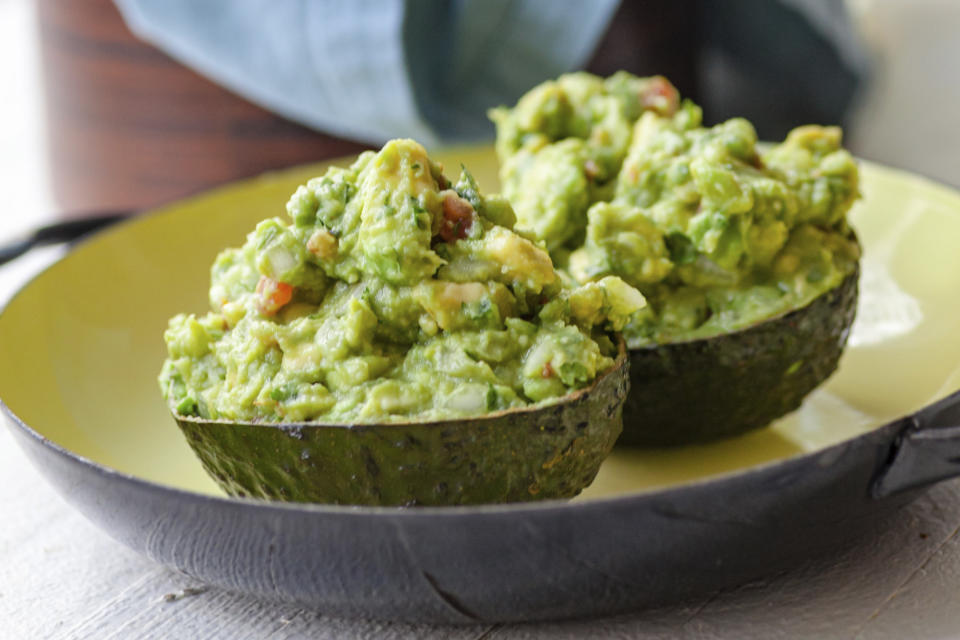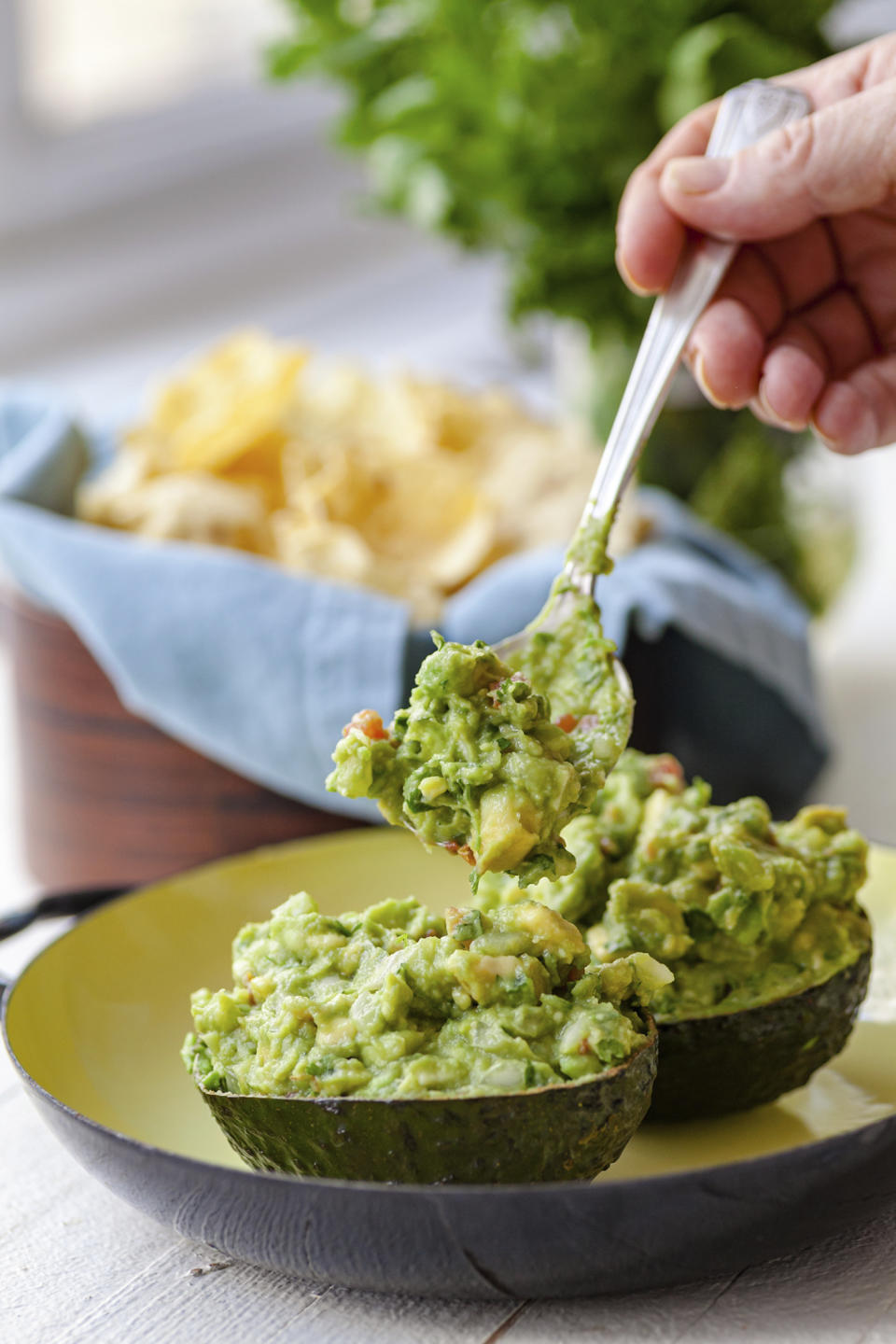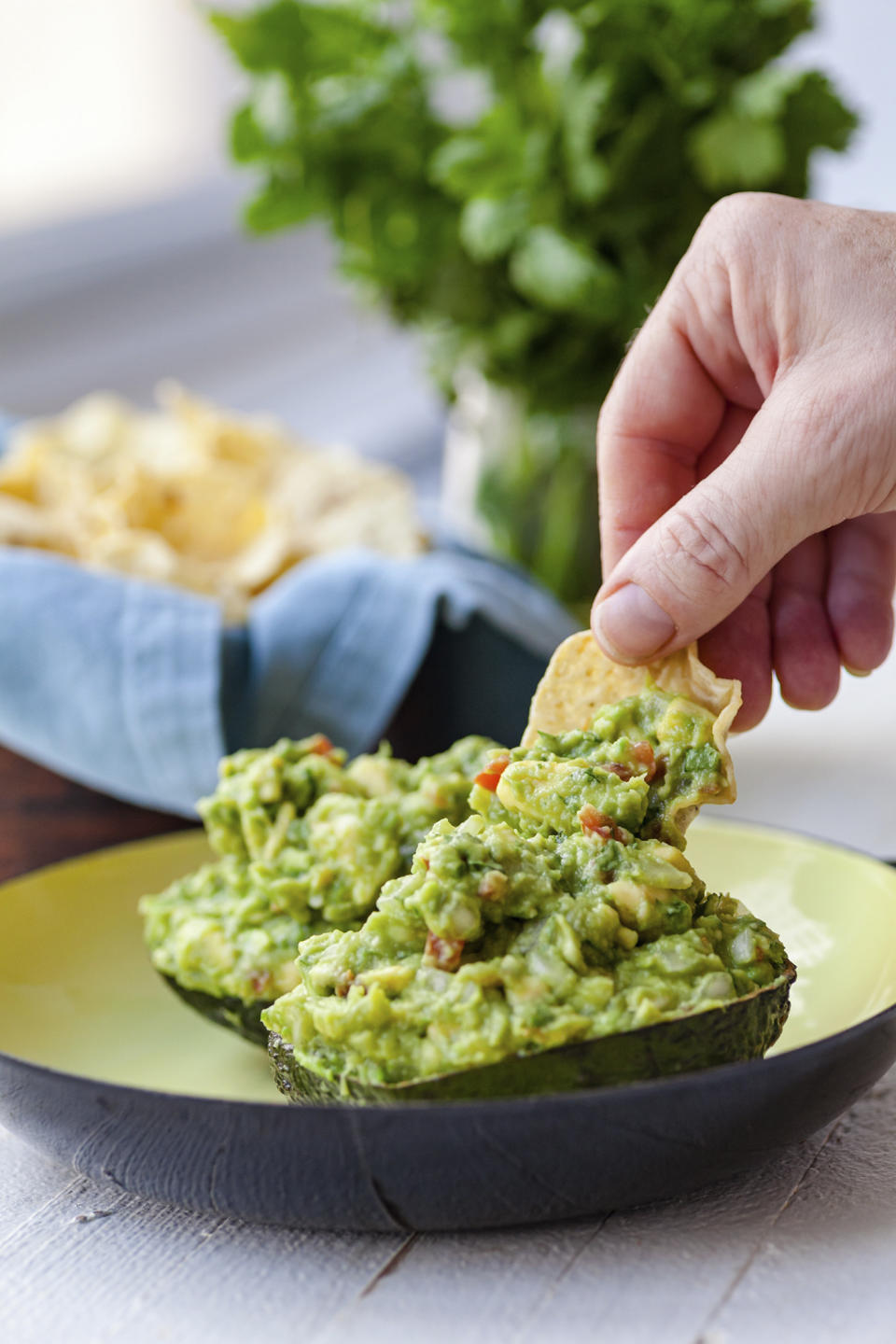Pro tips for turning meh guacamole into great guacamole, for Cinco de Mayo and beyond
Americans have been having a love affair with avocados in recent years. Especially in guacamole.
According to the California Avocado Commission, some 81 million pounds of avocados are consumed in the U.S. during Cinco de Mayo, the annual celebration of Mexican American culture that falls on May 5.
But some guacamoles are disappointing — bland, or watery, or lacking in creaminess. So, what makes the difference between meh guacamole and great guacamole?
“The conversation has to begin with the avocados themselves," says Julian Rodarte, a chef and co-owner of Beto and Son in Dallas, and a guacamole aficionado.
There are hundreds of varieties of avocados, though only a few are commonly available in the U.S. Rodarte says that Mexican Hass avocados (specifically from the Michaocan region of Mexico) are the best avocados for guac, with the highest oil content.
Ivy Stark, chef/owner of the restaurants Mexology and BKLYNwild in New York City, also recommends Hass avocados for guacamole. In general, Hass avocados, which can also come from California and other locales, are denser than the larger varieties, creamier and richer in flavor. Avocados with more water in the flesh will break down more quickly, especially when blended with the other ingredients.
To check the ripeness of the fruit (we all know avocado is a fruit, yes?), Rodarte suggests looking for two indicators. First, touch. Gently press the skin and "it will tell you right away if it’s soft.” Second, break off the little piece of stem at the top of the avocado and look at the little navel-like circle underneath. If it’s bright green, the avocado should be ripe. White is under-ripe, and brown is past its prime.
If you need to help your avocados ripen faster, place them in a brown bag or other container with a banana and let them sit for half a day to a day or two. The natural gases emitted by the banana will accelerate the ripening of the avocados.
As for seasonings, Rodarte says, “I eat guacamole for the flavor of the avocados,” so he recommends using a thoughtful, light hand. Fine sea salt is his preference, as it melts into the guac “without interrupting the creaminess with crunchy bits of salt.”
He also feels that lime or lemon juice alone is too assertive and will overwhelm the delicate flavor of avocado. He always adds in some orange juice, too, and sometimes uses orange juice all on its own, liking the natural balance of sweetness and tartness.
Rodarte recommends mashing the avocados with the seasonings until creamy, and then folding in the other ingredients so they don’t break down and make the guacamole watery.
Both Rodarte and Stark recommend using a mortar and pestle to mash the avocados. Rodarte aims for a “whipped butter consistency” while Stark describes her ideal consistency as “soft and chunky.” For those of us who don’t have a mortar and pestle in the kitchen, Rodarte says a fork is fine, too.
He then stirs in chopped meaty tomatoes, with the juice and seeds removed, and recommends a finely minced white or red onion. He adds finely minced or chiffonaded cilantro, but says “a little goes a long way,” so be judicious when adding this strong herb.
Stark thinks cilantro and jalapeños are essential to good guacamole. Rodarte also like the heat of chile peppers in his guacamole, but prefers fresnos or serranos to jalapeños.
Rodarte says the molcajete, or base of the mortar, is the “cast-iron pan of Mexico,” taking on flavors from different ingredients over the years.
“Nothing will ever taste like a dish made using your abuelita’s mortar and pestle, with years of gradual seasoning," he says.
Rodarte does play with more non-traditional ingredients, too. He’s used chili crunch as a finisher, blended in yuzu ponzu sauce, and added a few drops of toasted sesame oil in some versions of guacamole.
Stark offers many twists on guacamole, playing with tropical fruits and berries. She also likes to make versions with shrimp, crab and lobster, and at Mexology they offer a guac with pomegranate seeds and toasted pepitas.
As for the challenge of storing guacamole without it browning, both chefs recommend pressing plastic wrap right on top of it to minimize oxidation. Rodarte also suggests brushing the top of the guacamole with a bit of oil to seal it from exposure to the air.
Keep the guac in the fridge, and if there is some browning, Stark says to just scrape a thin layer from the top before serving.
If I know I'm making the guacamole to serve later, I hold back on adding the lime juice to the recipe. I blend everything up, then pour the lime juice over the top, using it to “seal” the top of the guac, and then stir it in just before serving. The proportions will still be perfect, and you will have avoided the browning.
Consider serving guacamole in scooped-out avocado shells. They might be a little wobbly, but you can nestle the shells in a bed of tortilla chips for more stability.
The following guacamole recipe is inspired by Rodarte’s tips:
CLASSIC GUACAMOLE
Ingredients:
2 ripe Hass avocados, preferably from Mexico
Fine sea salt and freshly ground black pepper to taste
2 teaspoons fresh lime or lemon juice
2 teaspoons fresh orange juice
⅓ cup minced red or white onion
1 Roma tomato (cored, seeded, and chopped; about 1/2 cup)
½ to 1 teaspoon minced seeded serrano or Fresno pepper
½ to 1 teaspoon minced fresh cilantro
Directions:
Cut the avocados in half, remove the pits, and use a knife to cut the avocado flesh into chunks right in the skin, cutting in one direction and then crosswise in a grid-like fashion. Use a spoon to scoop out all of the flesh into a medium-size bowl. Mash with a fork, or use a mortar and pestle. Blend in the salt, pepper and citrus juices.
Add the onion, tomato, chile pepper and cilantro and gently fold into the avocado until well blended. Taste, then adjust the seasonings.
You can serve the guacamole with tortilla chips or use on tacos, burritos, quesadillas or other dishes.
—-
Katie Workman writes regularly about food for The Associated Press. She has written two cookbooks focused on family-friendly cooking, “Dinner Solved!” and “The Mom 100 Cookbook.” She blogs at https://themom100.com/. She can be reached at Katie@themom100.com.
___
For more AP food stories, go to https://apnews.com/hub/recipes



